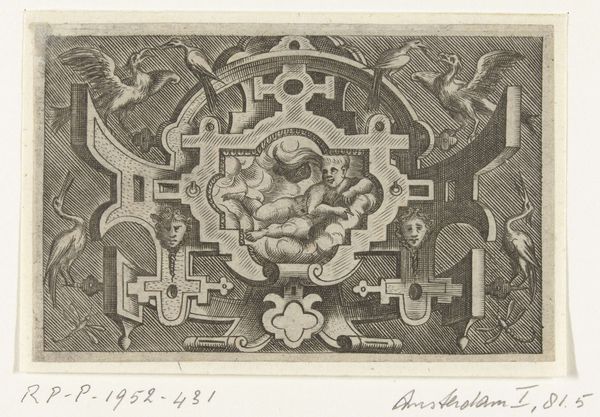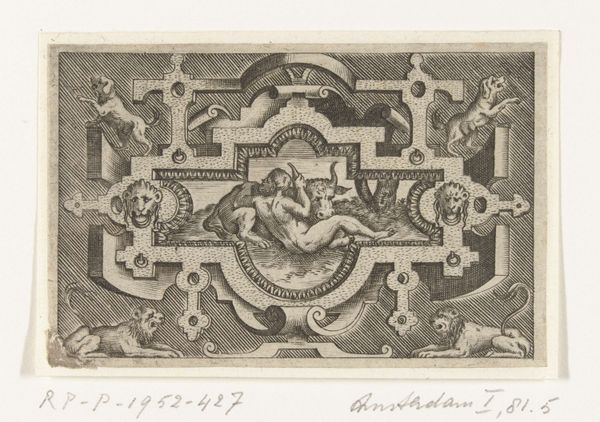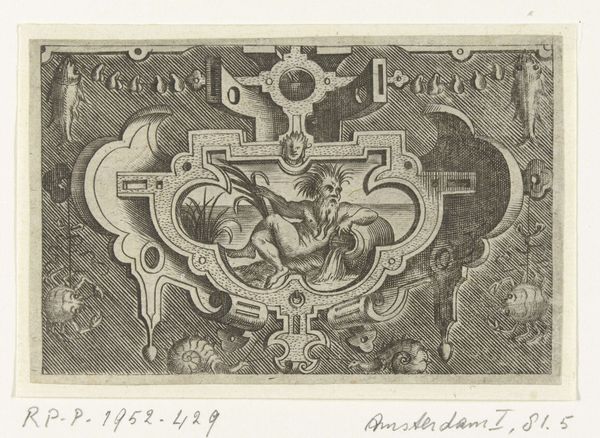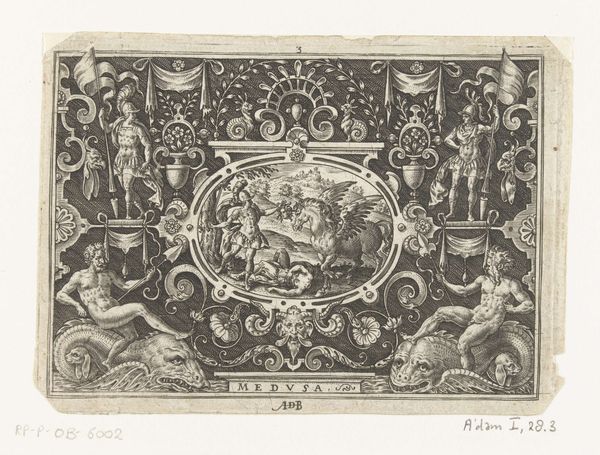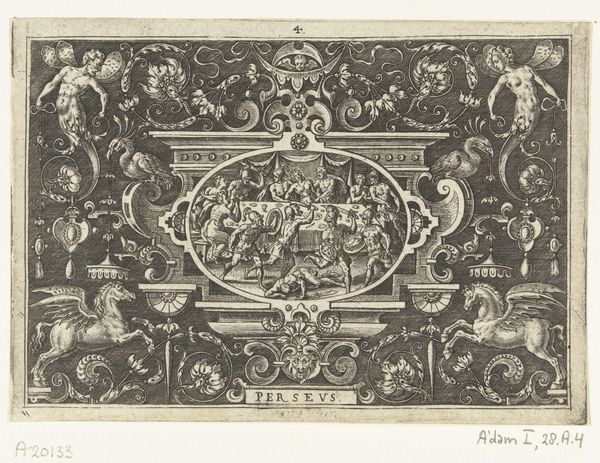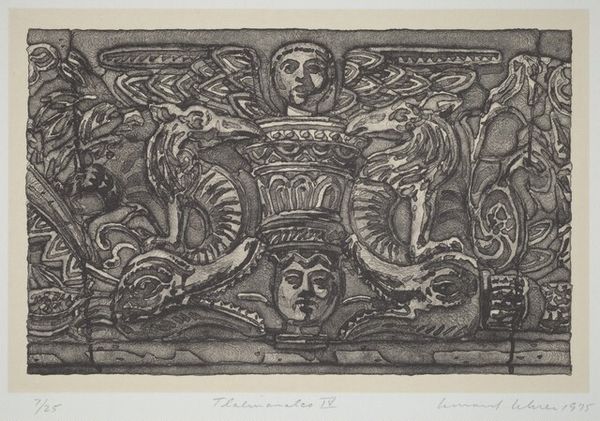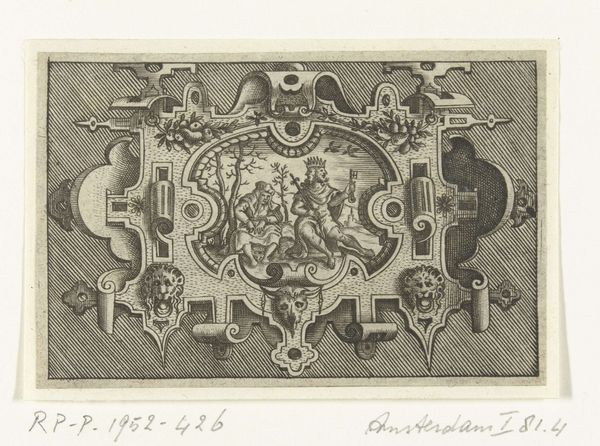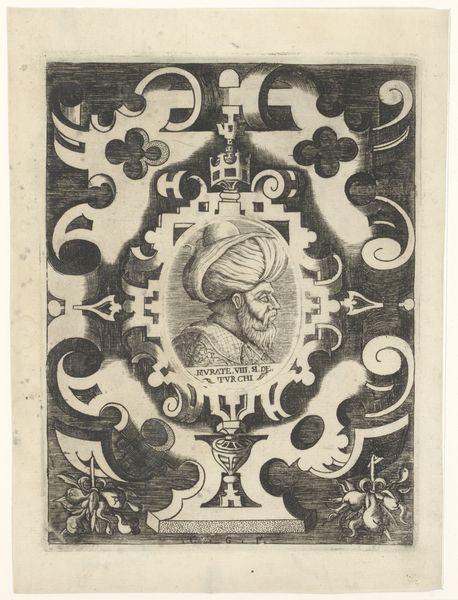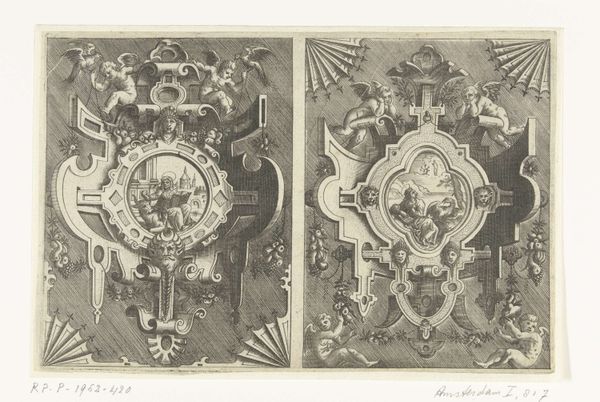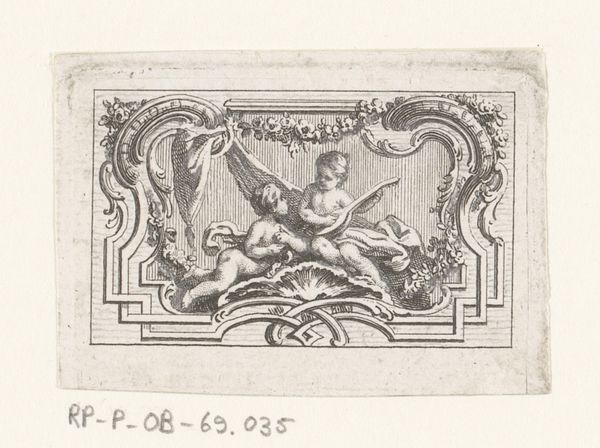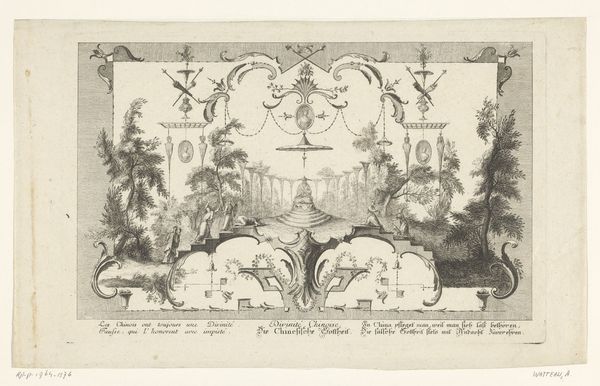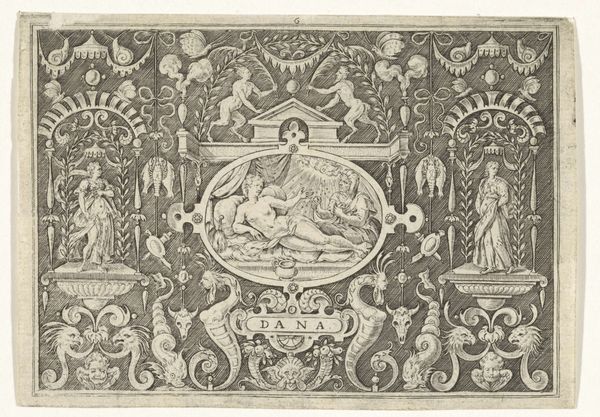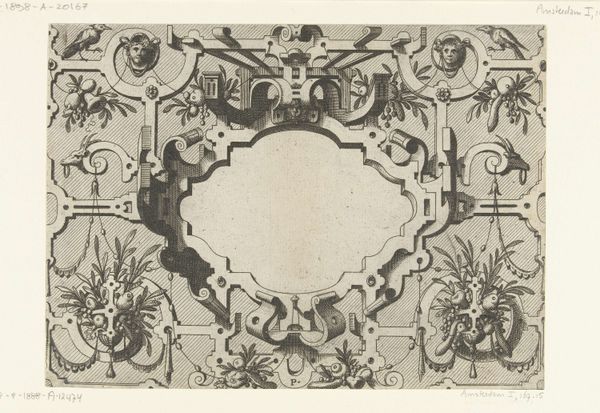
print, etching, engraving
#
allegory
# print
#
etching
#
mannerism
#
figuration
#
11_renaissance
#
history-painting
#
engraving
Dimensions: height 67 mm, width 102 mm
Copyright: Rijks Museum: Open Domain
Curator: Pieter van der Heyden created this engraving in 1566 entitled "Representations of the Four Elements: Fire." It’s currently part of the Rijksmuseum collection. Editor: The first impression? Organized chaos. The central figure seems almost overwhelmed by the ornate frame and the curling, smoky shapes around him. The details, even in the grayscale print, are fascinating. Curator: As an engraving, the key to understanding its context lies in considering its mass production, especially during the Mannerist period. The intricate design likely served as a template, widely disseminated and adapted by artisans and craftsmen of all kinds. Editor: Ah, a pattern book! Suddenly, the rigid symmetry makes more sense. The figure holding the urn, perhaps a personification of fire, feels less like the focus and more like a decorative element within a grand design. Curator: Precisely. The use of fire is not so much about its elemental power but about its properties – its capacity for change, for instance. It is translated into tangible, manufacturable imagery for consumption. Editor: That makes me think, does fire's transformative nature become a metaphor for artistic creation? Van der Heyden turns the raw "material" of fire into a manufactured piece. Very meta. Curator: It is likely the allegory of fire would then be the passion of creativity or the spark of divine creation translated to something like ornamental architectural accents or even a textile design. Editor: And speaking of manufacture, one really has to consider the manual labor needed to cut all these fine lines! So the element is really human industry, maybe, in its purest form. Curator: The materiality of the copper plate, the ink, the paper – all become part of the equation. They're not merely supporting elements; they inform the image. Editor: You've entirely reframed the print for me. It’s not about elemental grandeur, but the everyday applications. Van der Heyden’s engraving turns something seemingly sublime into the very relatable nuts and bolts of Renaissance-era production. I see something less about the heat of creation than its cooling down into objects for common use. Curator: A powerful insight. Thinking about its reception opens so many questions. It ceases to be art in the traditional sense and morphs into evidence of economic and cultural shifts. Editor: In a sense, fire is a visual catalyst that helps us see art not as a removed concept, but as a physical part of historical and economic structures.
Comments
No comments
Be the first to comment and join the conversation on the ultimate creative platform.
